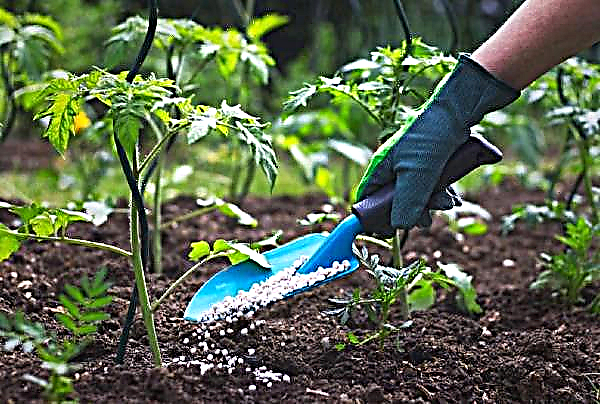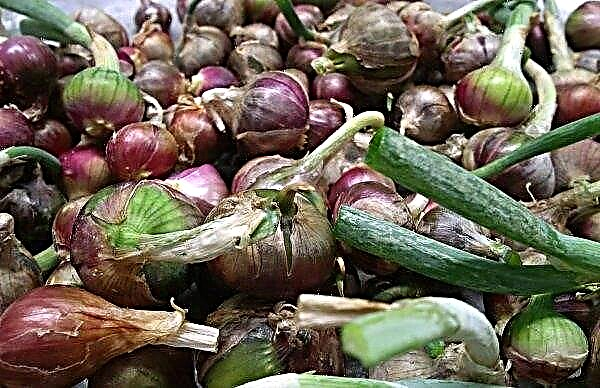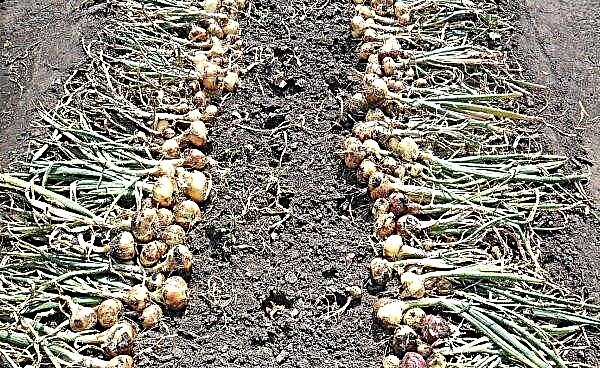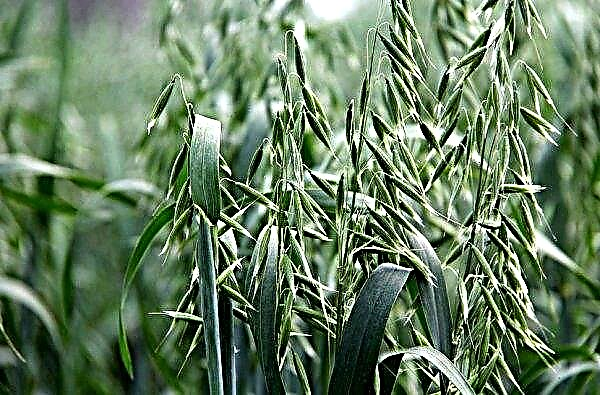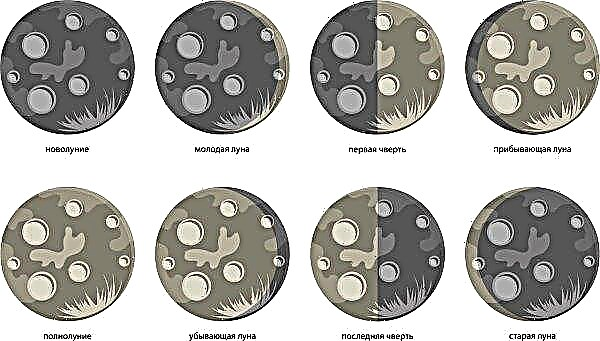Growing cucumbers is a popular activity among many gardeners. This tasty and healthy vegetable is one of the few that can be eaten unripe, and the younger the cucumber, the tastier. However, the process of growing this vegetable has its own characteristics, non-observance of which can lead to hollow fruit - more on this in the article.
Causes of the appearance of voids inside
There are many reasons that affect the quality of ripened cucumbers. Usually the fault of hollow fruit is improper care. Violation of irrigation rules, insufficient top-dressing of the soil, poor adaptation to climatic conditions - each of these factors can cause irreparable damage to the development of the placenta, in which there are seed primordia. We will understand everything in detail.

Watering
Many gardeners believe that cucumbers are most in need of moisture, so they try to water them as often as possible. Indeed, 90% of the cucumber fruit consists of moisture, and if it is lacking in the soil, these vegetables will not be able to grow normally, receive enough microelements. However, one must remember that the excess of moisture is no less terrible - cucumbers will absorb it in excessive quantities and eventually begin to crack, dry out. All this will inevitably lead to the destruction of tissues, loss of mass with the formation of voids.
Important! You need to water cucumbers early in the morning before sunrise and in the evening at sunset to avoid injuring the plant. Under the hot rays of the sun, the drops of water will heat up, and it is quite possible that burns will occur.
Watering cucumbers should be moderate and carried out taking into account the characteristics of the plant. The root system of the crop in question is located in the upper part of the soil, so dry soil completely deprives the plant of the ability to fully develop. In the spring, it is enough to water cucumbers once a week, and with the onset of the flowering and ripening period, the number of irrigations is increased to 2-3 times a week.

Another important point is how to water. Water must be delivered either directly under the root or from above. This is done so as not to harm the root system. After watering, it is advisable to loosen and mulch the soil using straw. One of the possible options will be organic mulch, which will not only protect the soil from drying out, but also fill it with carbon dioxide, enrich it with the necessary humus.
Nutritional deficiency
The lack of essential trace elements will significantly complicate the development of the plant and, as a result, will lead to a poor-quality crop, including fruits that are empty inside. Organomineral mixtures that create a favorable environment are most effective. Sandy soils often suffer from a lack of magnesium - feeding it into the soil as a top dressing will increase yield.
To achieve long-term fruiting and the absence of emptiness in cucumbers, the soil should be fertilized with compounds with a high content of phosphorus, and plants growing in the shade need potassium.

Organic fertilizers are needed to saturate the soil with useful substances, but they must be used carefully so as not to increase the level of nitrogen. Compost is better: it is less dangerous than manure of herbivores and will not cause an overdose. It is impossible to prevent the saturation of the soil with fertilizers - otherwise the green mass will actively develop, while the budding will slow down.
Fertilizing the soil microflora is useful by spraying with infusion of herbs, in particular nettles. For cooking, it is necessary to collect and chop (chop) the young nettle, put it in a bucket and fill it with water. The infusion is left in a sunny place, having previously covered with a lid. The fermentation process lasts a week, after which the contents are filtered and diluted with running water in a ratio of 1:10. The resulting infusion process the beds with cucumbers.
Did you know? The homeland of cucumbers is the territory at the foot of the Himalayan mountains. In this area, they grow to this day on their own in the wild.
Soil features
The soil should be saturated, soft and light. Do not wait for a good harvest on too hard or, conversely, poor sandy soil, not able to retain moisture. The ground cover must be loosened periodically - this will provide air circulation, uniform soil moisture, and, therefore, the culture will grow faster.
One of the reasons for the appearance of hollow cucumbers is various diseases caused by harmful organisms contained in the soil. For the organization of cucumber beds, it is better to use purchased land, which is already cleared of various unwanted parasites.

Lack of light in greenhouses
One of the problems in growing cucumbers in greenhouses and hotbeds is the thickening of plantings, as a result of which the plants do not receive enough light. All this leads to the fact that the processes of photosynthesis are disrupted, the fruits are deformed, become empty.
Fertilizers with a high content of potassium will help to cope with the problem. This chemical component will make up for the lack of light and establish the mode of intercellular metabolism.
Open air temperature differences
Temperature changes can also contribute to the formation of voids in cucumbers. If in the conditions of the greenhouse the temperature regime can be kept within certain limits, then in the open ground this is beyond human power. Most often, differences are observed during periods when hot days and cold nights are rare in the southern regions. If the area is subject to high temperature fluctuations, it is better to abandon the cultivation of cucumbers in the open ground and resort to the greenhouse method.

Untimely Harvest
Late harvest is one of the common reasons why cucumbers are hollow.. Uncollected ripened fruits continue to feel the need for moisture and begin to draw it from their own resources. As a result, the cucumber shell grows, and the core disappears. In addition to hollowness, the fruits become bitter, they have a coarsening of seeds and peels, which makes vegetables practically unsuitable for consumption. Cucumbers grow best at night, so early morning is the best time to harvest.

What to do and how to get rid of the problem
Even the most experienced gardeners can face the problem of hollow ripened cucumbers. This often happens because in the process of growing the rules of care were poorly observed, and they should be urgently adjusted so that voids cease to form in young vegetables.
It is also worth paying attention to the condition of plants - do they have signs of viral diseases. The disease is determined by the appearance of unnatural spotting on the leaves, stems, wilting. Having discovered a diseased plant, you must immediately get rid of it, because many viruses can spread to neighboring plants, including spreading by insects.
Did you know? The first greenhouses designed specifically for growing cucumbers were built in ancient Rome on the orders of the emperor Tiberius. His desire to enjoy the taste of this vegetable every day led to the arrangement of year-round greenhouses.
Consider what to do if voids are found in the cucumbers. Salting and preserving is a good solution.. Before pickling cucumbers, they need to be immersed in a container (bucket, jar) with slightly salted water and let it brew for several hours. For reliability, you can make a few punctures in the fruit with a toothpick. During this time, the cucumbers will be filled with liquid, and its salt will retain in the fruits. Then you can start rolling vegetables. Ready pickles will be resilient and crispy, preserving their qualities throughout the winter.

Preventive measures
In order not to encounter the problem of emptiness in cucumbers after all garden work done, it is necessary to observe the rules of planting and care. The seedling method of planting is considered more productive, as it gives more probability to get a rich harvest of ripe vegetables. However, many consider it time-consuming and prefer sowing seeds.
The first landing must be carried out at a time when the soil is sufficiently warm, with a temperature of at least + 12 ° C. At the same time, the recommended air temperature ranges from + 15 ... + 18 ° С.
Important! When choosing cucumbers for planting, abandon the early and pollinated varieties —they react negatively to short daylight hours and temperature changes. It is better to choose juicy hybrid representatives, such as Okhotny Ryad, Maryina Roscha, Petrel, Buyan, etc.
Cucumbers are a fastidious culture that does not like sour soil. Before planting, you need to check the acidity level - it should not exceed 6.5 pH. You can check the level using a portable pH meter.
Throughout the growth of cucumbers, it is necessary to follow the rules of watering, control the temperature regime, nutrition of the soil. To preserve a beneficial microclimate in a greenhouse, it is opened in warm weather and closed at night.

The knowledge and experience in growing cucumbers will help significantly reduce the risk of harvesting a poor-quality crop. As you can see, the emptiness in the middle of the cucumbers most often becomes the result of improper agrotechnical actions, avoiding which, you can get delicious full-fledged vegetables to the table.

